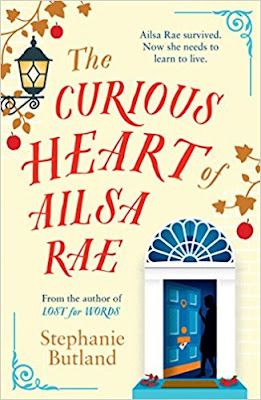I have occasionally been asked about channelling emotions into my writings, and how I manage to do that, in the context of not becoming completely wrapped in the thought and distracted from the process of writing. My answer is very simple. It all depends on whether you are writing of emotion as being 'in the moment', or describing the emotion to someone else.
When you are simply describing the emotion (ie: not what you are feeling), the task is significantly easier. You are restricted, only by the extent of your own vocabulary, and the point you seek to make, at that given point in the text. It's not about you, so you can be a little more blunt, a little more brutal, than you might otherwise have been with yourself and your own feelings.
In the moment emotion (when it is about you) requires you to relive the experience, to sit back, close your eyes, and imagine, as if you were actually there in that moment, at the point of writing. You need to be sensory aware, in that you can feel the air on your face, as it happened at the time, the smells as they were, touch the scene, interact and inhale the experience, as if it really was in the here and now. This can be an extremely difficult endeavour, as inevitably, as you sink into that emotional abyss, you become consumed by the cognitive and physical reactions to the emotion itself, at the detriment of writing down what you are actually feeling. In essence, it can be debilitating.
To overcome this issue, I voice record this part of the process as I travel through the scene, until I have extricated myself from it at the far end. I then, inevitably almost, take a short break (always take care of yourself) to re-balance myself, especially if the emotional recollections involve an element of personal pain. Then and perhaps, most importantly, while it is still fresh in my mind, I replay the recording, and wrap it in appropriate words into the book.
It may also be appropriate to visit that routine several times on any singular issue. Some issues are emotionally damaging, painful, hard to condense even after the rub of time, and I take a 'time chunked' approach to revisiting them. I will take the memory so far one day, and then leave it, returning the next to potentially complete the job. It might also be prudent, as I have found, to bundle emotions within a chapter, prior to the point that you start writing, and map out how you are going to inter-mingle the writing and the emotional exploration, because after-all, we are seeking not only to control the emotional output, but to use it constructively within the chosen text.
The presumption here is that a chapter of text, may in fact be endowed with a wide range of emotional ties, and many of those emotions may be competing. They can involve pain, death, happiness, birth, success and failures. During the writing process, I found that I needed to manage how I permitted myself to interface with those emotions, in such a way as to reap, maximum benefit from minimal disruption to the writing process. Again, 'chunking' or 'bundling' will help. Bundle the harmful from the pleasurable, successes from the failures, or link them in small but connected bundles, that represent the specific chronology in which they occurred (ie: The elation of having a parent at your graduation, followed by the despair of that parent dying shortly afterwards). Two very conflicting emotions, that are chronologically linked to a small timeframe within the context of your writings.
In my personal opinion, the absolute key to channelling emotion into your writing, above all else, is to start from an emotionally cold disposition. If the thoughts are truly emotive, truly heart-wrenching, truly awe-inspiring and the rest, then they should be capable of bringing you to that state from cold.
You all know what I mean. We have all been in the position of happily watching a film, only for a particular scene to suddenly leave us with a lump in the throat, trickle of water in the corner of an eye, etc. We move from a state of happiness and contentment, to raw emotion almost in the blink of a tear-stained eye. That’s the impact you are looking for in the words that you eventually write.
Dave knows all about channelling your emotions positively while writing about trauma. He's just finished his first book about growing up in institutions.
This is a harrowing personal voyage into the 1960-80s childcare system as experienced first-hand by the author and many like him. It was a brutally horrific system, that made countless victims of the very children it was designed to protect. These brutally horrific regimes, founded upon extraordinary levels of inhumanity, cruelty, violence, fear, and intimidation, brought children to their knees, brutalised, cowed and often in fear for their very existence.It was a stark, depressive, and oppressively dysfunctional system, that imposed perpetual physical suffering and mental hardship, upon its most vulnerable charges. It was a pernicious cycle of ritualised systematic abuse, inflicted on some of the most vulnerable children society could offer up.This was the environment that the ‘Unfortunates’ found themselves embedded in during the 1960s. It was a system that lacked care, thought, and all things humane. A system where the imposition of brutal physical and sexual abuse had become normalised, legitimised, embraced and ultimately, forcefully accepted. This was life in a local authority home. These were the homes of ‘the Damned’, where a catalogue of daily horrors were inflicted for the personal pleasure of those charged with the care of this hidden, and often forgotten, sub-culture of children who, through no fault of their own, were forced to embrace these traumas, and endure a fight for their very survival.
Follow Dave on Twitter @OYFthebook













